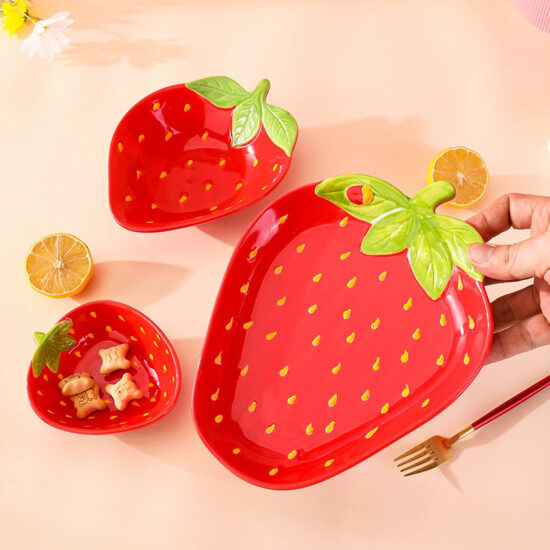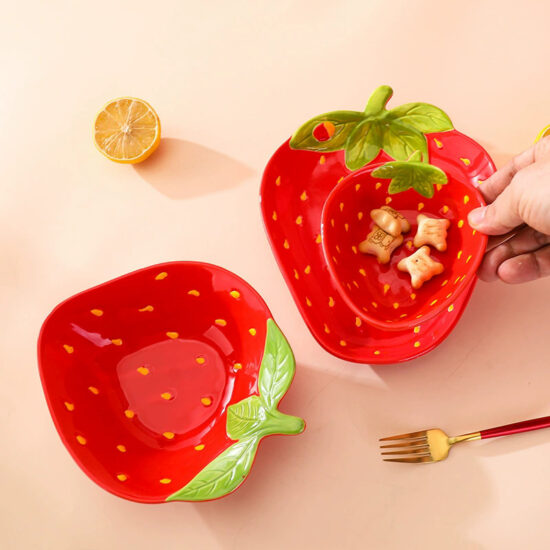bob@nbdho.com
Ceramic Plates vs. Other Tableware Materials: Which is Best for Your Business?
🥇 Ceramic Plates vs. Other Tableware Materials: Which Is Right for You?
When selecting tableware for home, restaurant, hotel, or retail distribution, the choice of material directly impacts durability, design, customer experience, and long-term cost. In this article, we compare ceramic plates with other common tableware materials to help wholesalers, brand owners, and hospitality buyers make informed decisions.
🔸 1. Ceramic Plates
Overview:
Made from natural clay and fired at high temperatures, ceramic plates include porcelain, stoneware, and earthenware.
Pros:
-
Elegant, versatile designs with various shapes, glazes, and finishes
-
Durable and chip-resistant when high-fired
-
Heat-resistant, microwave-safe, and dishwasher-safe (depending on glaze)
-
Eco-friendly and non-toxic if lead-free
Cons:
-
Heavier than some alternatives
-
Can break or chip if dropped from a height
Best For:
Restaurants, homeware retailers, boutique hotel dining, custom branding, luxury presentation.
🔸 2. Melamine Plates
Overview:
A lightweight, plastic-based resin often used for casual dining or outdoor tableware.
Pros:
-
Extremely durable and shatter-resistant
-
Lightweight and affordable
-
Ideal for cafeterias, kids’ use, and outdoor dining
Cons:
-
Not microwave-safe
-
Can stain or scratch over time
-
Perceived as less premium or elegant
Best For:
Canteens, schools, outdoor events, or budget-focused restaurants.
🔸 3. Glass Plates
Overview:
Made from tempered or non-tempered glass, often transparent or frosted for decorative use.
Pros:
-
Sleek, modern look
-
Non-porous and stain-resistant
-
Dishwasher-safe
Cons:
-
Fragile, easily breaks with impact
-
Limited style versatility compared to ceramics
Best For:
Minimalist dining, dessert plates, cafes, catering, or visual-focused presentation.
🔸 4. Stainless Steel Plates
Overview:
Often used in industrial or traditional food settings, these plates are made from food-grade metal.
Pros:
-
Extremely durable and long-lasting
-
Lightweight and unbreakable
-
Easy to clean and sanitize
Cons:
-
Industrial look not suitable for all dining environments
-
Can become hot to the touch
-
Not microwave-safe
Best For:
Buffet settings, military or institutional kitchens, outdoor and travel use.
🔸 5. Bamboo or Wooden Plates
Overview:
Made from sustainable materials and commonly used for eco-conscious dining or disposable needs.
Pros:
-
Lightweight and biodegradable
-
Natural look for rustic or eco-themed events
Cons:
-
Less durable, not microwave or dishwasher-safe
-
Susceptible to water damage over time
Best For:
Event catering, disposable eco-products, or decorative table setups.
⚖️ Comparison Table
| Material | Durability | Microwave Safe | Design Variety | Eco-Friendly | Cost Range | Best Use Case |
|---|---|---|---|---|---|---|
| Ceramic | High | Yes | Very High | Yes (lead-free) | Medium | Restaurants, Hotels, Home Retail |
| Melamine | Very High | No | Medium | No | Low | Cafeterias, Kids, Outdoor Use |
| Glass | Medium | Yes | Low-Medium | Yes | Medium | Cafés, Catering, Minimalist Homes |
| Stainless Steel | Very High | No | Low | Yes | Low | Institutional, Outdoor, Travel |
| Bamboo/Wood | Low-Medium | No | Medium | Yes | Low | Eco Events, Disposable Use |
💡 Conclusion: Why Ceramic Plates Remain a Top Choice
While every material serves a unique market, ceramic plates strike a perfect balance between aesthetics, performance, and versatility. For business buyers, especially those in retail, hospitality, or branding, ceramic allows for:
-
Customization (color, glaze, shape, logo)
-
Premium look and feel
-
Functional performance (microwave, dishwasher safe)
-
Sustainable and food-safe production
📞 Partner with a Reliable Ceramic Plate Manufacturer
If you’re looking for a trusted supplier of ceramic plates for wholesale or branded customization, [Your Company Name] provides OEM/ODM services with strict quality control, global shipping, and a wide design portfolio.
👉 Contact us now for samples or quotes!

